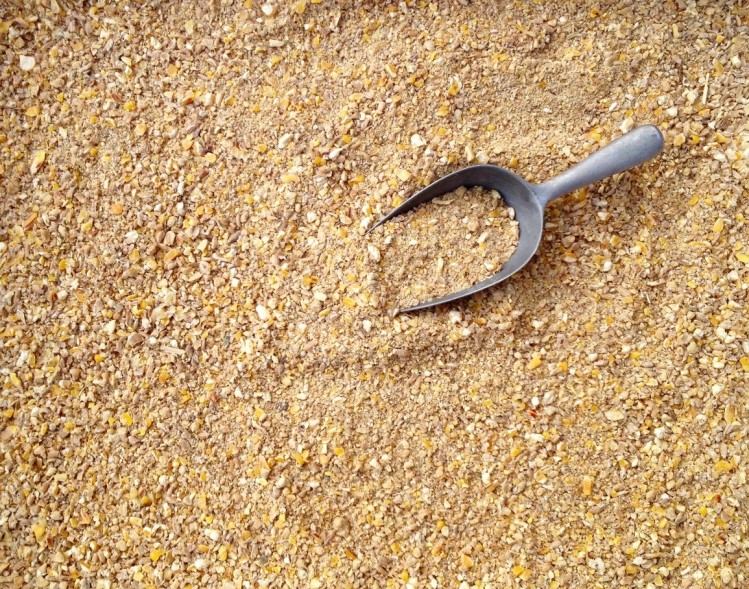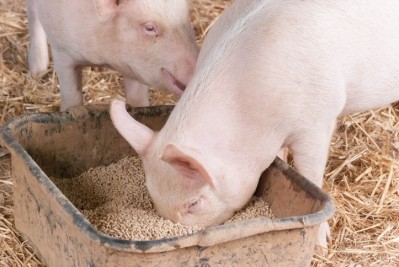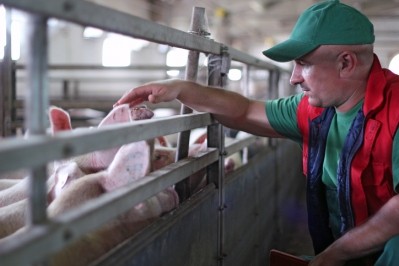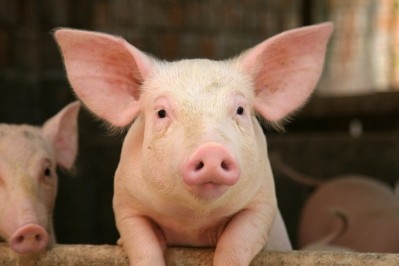Rice hulls, fatty acid combo may help flush PEDv from feed mills

A team of researchers at Kansas State University has been examining the potential role for the flushing process when the porcine epidemic diarrhea virus (PEDv) has been found in a feed mill/
Jordan Gebhardt. corresponding researcher for the project, reported the team's findings at the American Association of Swine Veterinarians meeting in Denver, Colorado.
The research is currently, however, being pulled together for peer review and publication, he said.
The team wanted to see if there was anything that could be done to reduce infection once a virus has got into a feed facility, he said.
“Once [it is there] in a feed mill, what do we do about it?” he told FeedNavigator.
“Is there anything we can do to get it out [of the mill] or make the risk as low as possible?”
Project details
The project looked at the production process switch already in use in feed mills, such as the changeover to production of a medicated feed from a non-medicated feed run, said Gebhardt.
One technique used in that process is to flush feed or run another batch of feed between the medicated feed and the non-medicated feed.
“A lot of the background and thought process is similar,” he said. “We decided on rice hulls because it’s a fairly low-cost ingredient, it’s a carrier ingredient and [used in] vitamin premixes – and it’s abrasive – potentially there’s a level of abrasiveness when it runs through the equipment.”
Using a flush of treated rice hulls is also a more practical process than using wet decontamination in a commercial size mill, the researchers said.
The team ran a batch of feed that did not include the PEDv virus through its laboratory-size feed mixer to establish that the feed and equipment did not carry the virus, Gebhardt said. Then a batch of feed was inoculated with the virus and run through the machine, he said.
That contaminated feed was followed by the rice hull flushes. The hulls used included regular rice hulls, hulls that been mixed with a commercial formaldehyde product and hulls mixed with a 2% or 10% medium-chain fatty acid blend (MCFA).
Samples of the dust generated by running feed and the rice hulls through the feed mill were taken multiple times, he said.
Dust contamination findings
After the feed inoculated with PEDv went through the equipment, a following flush of untreated rice hulls was found to yield several samples that contained PEDv material, the researchers said. Three of six samples taken had indications of the virus.
For samples of the rice hulls mixed with the formaldehyde product and collected, one in six was found to carry a presence of PEDv, they said. Two of six samples taken of rice hulls with 2% of the medium chain fatty acid mixture also showed PEDv traces.
However, no PEDv RNA was found in the samples of rice hulls mixed with 10% MCFA solution, they said.
After the small-scale trial, a batch of feed inoculated with PEDv was run through a production-scale feed mixer and bucket elevator followed by a batch of rice hulls with 10% MCFA solution.
No PEDv RNA was found in samples of feed or rice hulls that were run through the system after the chemically-treated rice hulls, they said. But one of the samples taken from the rice hull and MCFA mixture used to flush the inoculated feed carried detectable amounts of PEDv.
Additionally, dust collected from the equipment after the inoculated feed went through the system contained a large amount of PEDv RNA, they said. When given to pigs, it was found to be infective.
Although there was an expectation that the dust generated by the contaminated feed would contain the pathogen, it was a surprise to see how much was present, said Gebhardt. “In the dust we collected, the ct value was slightly lower, meaning the presence of more genetic material in the dust than was in the feed,” he added.
Dust samples collected following the MCFA rice hull flush carried a smaller amount of the disease RNA, the researchers said. That dust was not found to be infective.
However, it is too soon to say if the flushing process could be part of a process established to help decontaminate the facility, said Gebhardt.
“That’s the million-dollar question – the way we collected the samples, all we can say is that the feed didn’t contain genetic material,” he said. “But we can’t say that the equipment was decontaminated.”
Additionally, more work would need to be done to refine the process, he said. “At this point we don’t have any definitive recommendations to how much to use, or how frequently, but there could be some benefit,” he added.
There are a lot of unanswered questions that remain, he said. “But what it showed was that using rice hulls or other materials – potentially there is something we can do to minimize the chance of disease.”
However, Gebhardt said another area for attention would be on improving feed mill biosecurity to prevent a biological agent, like PEDv, from entering.
“Once a pathogen enters a feed mill it’s very hard to get out,” he said. “Potentially a solution to minimizing the risk is to implement procedures to keep it out in the first place. Veterinarians have been practicing biosecurity for decades – how to keep pathogens out at a farm level – it may be some of those thought processes in terms of keeping disease out that we could start to adopt.”








